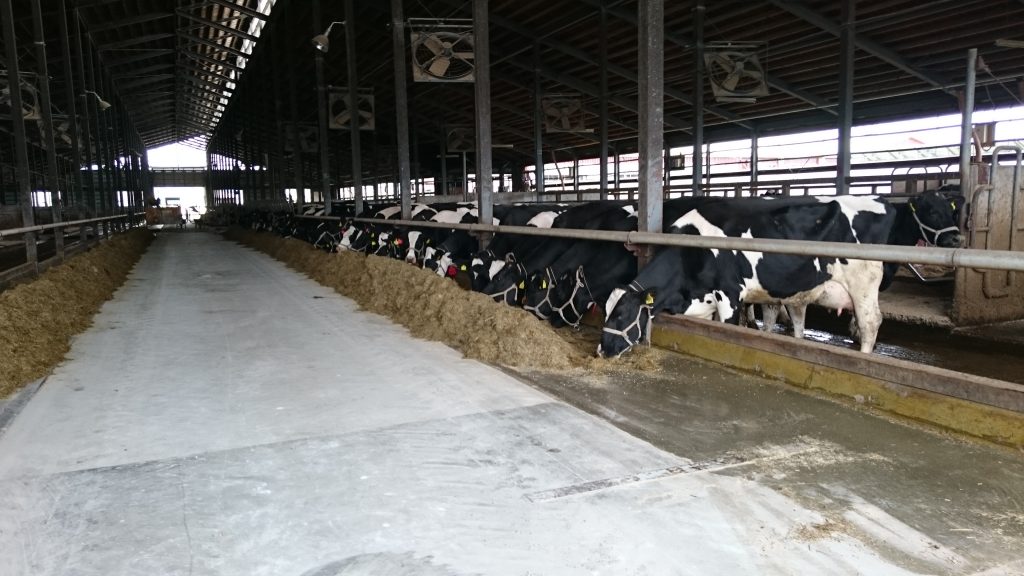Balancing fats, proteins and carbohydrates is just as complex for animal diets as for human ones. Constructing the perfect diet to maintain good animal health and growth is particularly important for dairy producers, who also must optimize milk production. In Japan, dairy producers have more options to include in their feed rations – U.S. low-fat distiller’s dried grains with solubles (DDGS) – thanks to the work of the U.S. Grains Council (USGC) with Japanese industry and government.
“DDGS is an excellent source of energy, readily fermentable starch, protein and minerals for lactating dairy cows, dry cows and replacement heifers,” said Tommy Hamamoto, USGC director in Japan. “The Japanese industry understands the benefits of DDGS as a feed ingredient and how to incorporate it into compound feed, thanks to the Council’s active involvement in promoting DDGS, including low-fat types, through feeding trials and other customer servicing activities.”
Overall, Japan set a record for U.S. DDGS imports for the second year in a row in 2018/2019, at nearly 487,000 metric tons. Six months into the 2019/2020 marketing year (September 2019-February 2020), Japan has purchased nearly 307,000 tons of U.S. DDGS.
Low-fat DDGS is of particular interest to the Japanese dairy industry, and the Council has promoted fat-extracted DDGS to this sector since 2014. Low-fat DDGS has a specific benefit to dairy animals as it can reduce the risk of acidosis in the rumen. Acidosis occurs when the pH of the rumen falls, depressing appetite, decreasing milk production among other, more serious impacts on the animal’s health.
Before low-fat DDGS could be introduced into Japan, however, it had to meet the strict regulatory standards for feed ingredients there. The Japanese government requires each new feed ingredient to be registered with the Ministry of Agriculture, Forestry and Fisheries (MAFF) after Japanese regulatory authorities approve its nutritional value.
In 2014, the Council worked with Japanese authorities to register the original fat content DDGS as well as a 7 percent low-fat DDGS. The Council then promoted the benefits of this new type of DDGS to Japanese dairy farmers during a series of seminars in the northern island of Hokkaido, the largest dairy-producing region.
Since that time, similar seminars in Japan, on-farm feeding trials, feed industry team visits to the United States and Export Exchange conferences introduced other new products to the Japanese dairy sector, including DDGS with even lower fat content, as low as 2 percent. The Japanese industry registered this new DDGS containing 2 percent with the government in February, and MAFF officially approved registration in March.
“As a result of the Council’s diligent promotion of low-fat DDGS, the Japanese industry found fat-extracted DDGS well-suited as a dairy ingredient,” Hamamoto said. “We expect these new products will extend the DDGS market to even more Japanese livestock producers.”
About The U.S. Grains Council
The U.S. Grains Council develops export markets for U.S. barley, corn, sorghum and related products including distiller’s dried grains with solubles (DDGS) and ethanol. With full-time presence in 28 locations, the Council operates programs in more than 50 countries and the European Union. The Council believes exports are vital to global economic development and to U.S. agriculture’s profitability. Detailed information about the Council and its programs is online at www.grains.org.

